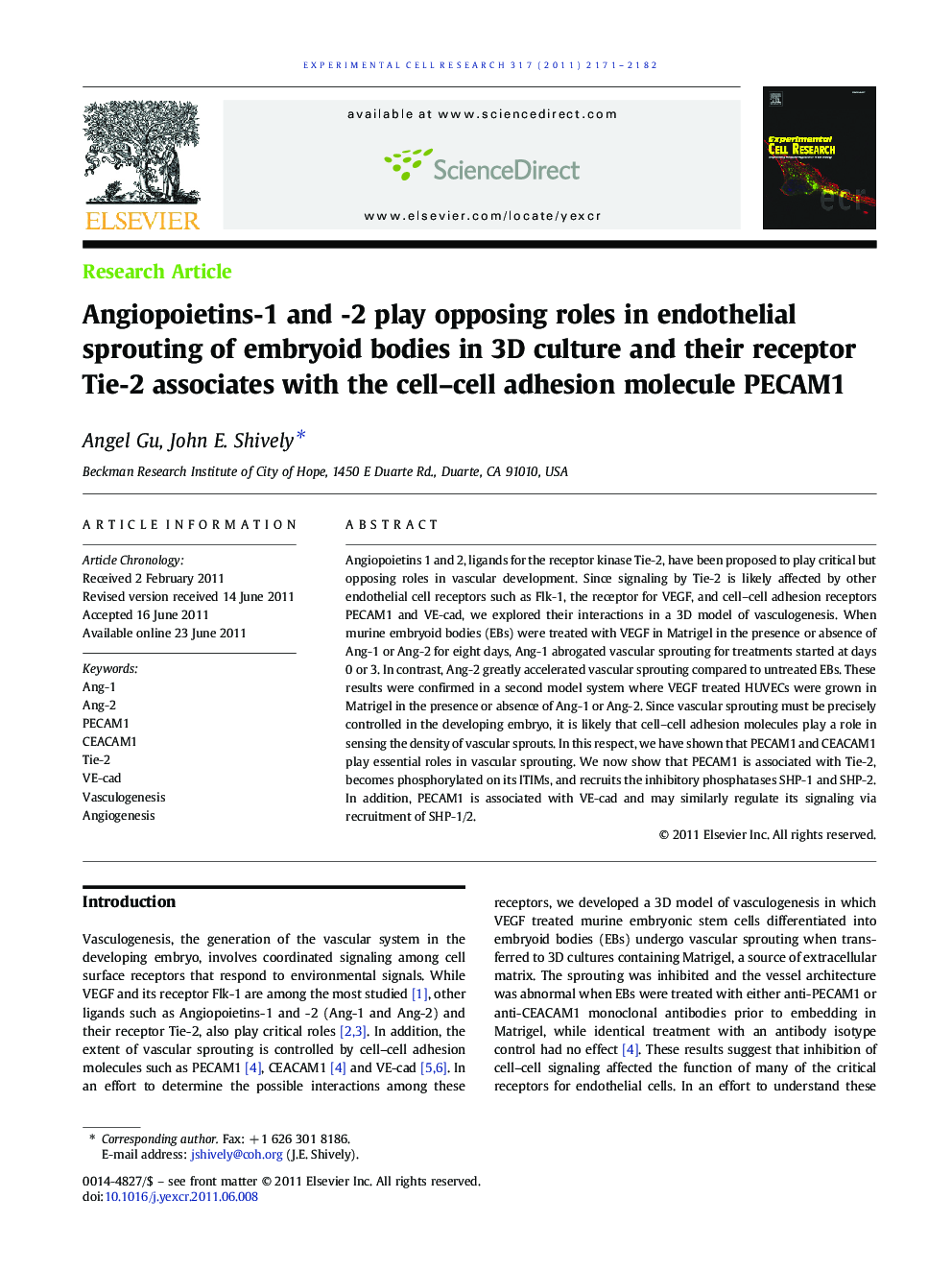| کد مقاله | کد نشریه | سال انتشار | مقاله انگلیسی | نسخه تمام متن |
|---|---|---|---|---|
| 10904510 | 1086600 | 2011 | 12 صفحه PDF | دانلود رایگان |
عنوان انگلیسی مقاله ISI
Angiopoietins-1 and -2 play opposing roles in endothelial sprouting of embryoid bodies in 3D culture and their receptor Tie-2 associates with the cell-cell adhesion molecule PECAM1
دانلود مقاله + سفارش ترجمه
دانلود مقاله ISI انگلیسی
رایگان برای ایرانیان
کلمات کلیدی
موضوعات مرتبط
علوم زیستی و بیوفناوری
بیوشیمی، ژنتیک و زیست شناسی مولکولی
تحقیقات سرطان
پیش نمایش صفحه اول مقاله

چکیده انگلیسی
Angiopoietins 1 and 2, ligands for the receptor kinase Tie-2, have been proposed to play critical but opposing roles in vascular development. Since signaling by Tie-2 is likely affected by other endothelial cell receptors such as Flk-1, the receptor for VEGF, and cell-cell adhesion receptors PECAM1 and VE-cad, we explored their interactions in a 3D model of vasculogenesis. When murine embryoid bodies (EBs) were treated with VEGF in Matrigel in the presence or absence of Ang-1 or Ang-2 for eight days, Ang-1 abrogated vascular sprouting for treatments started at days 0 or 3. In contrast, Ang-2 greatly accelerated vascular sprouting compared to untreated EBs. These results were confirmed in a second model system where VEGF treated HUVECs were grown in Matrigel in the presence or absence of Ang-1 or Ang-2. Since vascular sprouting must be precisely controlled in the developing embryo, it is likely that cell-cell adhesion molecules play a role in sensing the density of vascular sprouts. In this respect, we have shown that PECAM1 and CEACAM1 play essential roles in vascular sprouting. We now show that PECAM1 is associated with Tie-2, becomes phosphorylated on its ITIMs, and recruits the inhibitory phosphatases SHP-1 and SHP-2. In addition, PECAM1 is associated with VE-cad and may similarly regulate its signaling via recruitment of SHP-1/2.
ناشر
Database: Elsevier - ScienceDirect (ساینس دایرکت)
Journal: Experimental Cell Research - Volume 317, Issue 15, 10 September 2011, Pages 2171-2182
Journal: Experimental Cell Research - Volume 317, Issue 15, 10 September 2011, Pages 2171-2182
نویسندگان
Angel Gu, John E. Shively,